Category Archives for "Creative Writing"

As we head back to school for another year of writing, I thought I would just take a minute to share my 5 top tips for teachers who are new to teaching writing.
I am a firm believer that if I want students to complete any writing task (small or large) then I need to do it first. Why? It’s the same reason why we read the text before we teach it. I need to know that the task I’ve set will achieve the outcome I’ve planned for. So rather than just project a picture of an elephant and say write a description. I write the description. The side-benefits of completing the tasks yourself are: you can create mentor texts that suit your students; it helps with pacing – writing ALWAYS takes longer than we think (doing the writing yourself proves this); it helps you understand the ‘in brain’ process your students will go through (so you can support them better when they get stuck); and it can help you spot with misconceptions and simple errors.

This sounds obvious, doesn’t it? But let me break it down why it’s important. There are so many skills that we teach and test for in writing. The technical aspects of grammar, spelling, sentence construction, dialogue. Then you have narrative structure, character creation, mood, atmosphere, action, resolution. Finally, there are things like word choice, punctuation, literary devices, genre writing. So, for every writing task you set – make sure you and your students are really clear on which of these (and all the others) you want them to focus on. Make it explicitly clear for them.
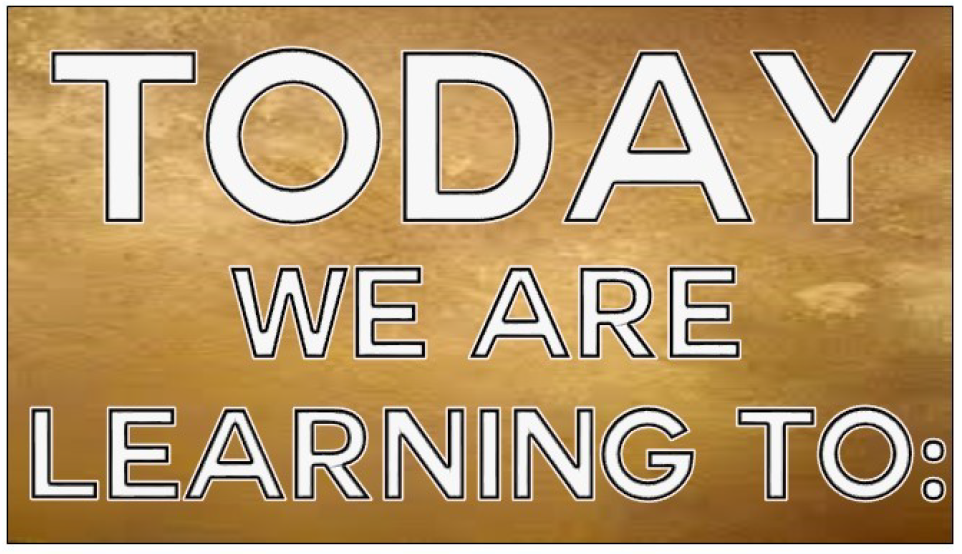
This tip goes hand in hand with number 2. Creative writing can be (and often is) as stressful and terrifying for students as essay writing. Even students who are readers often can’t see the creative thought process that results in a great story, so we need to show it all to them. That means actively teaching and then demonstrating narrative writing, story structure, character, description, action, dialogue, transitions, literary devices, paragraphing – the list goes on. Show your kids good examples, bad examples, how to fix mistakes, how powerful editing can be.

I don’t call these quick writes because I don’t want to unconsciously indicate that writing can and should be bashed out in 10 minutes. Even if that is the only time I can give a particular task. As all writing (whether it’s about practising sensational similes or creating complex characters) is about creating moments that the reader will remember, I use the term ‘miniature moments’. What are these exactly? Well, they can be anything you want. Lasting from 2 – 10 minutes, these activities are fantastic for focusing on a handful of key elements that contribute to a larger piece of writing. Say for example you will spend the lesson looking at descriptive writing – then your miniature moments could be: listing nouns, sourcing adjectives that add clarity, testing out metaphors, writing open lines, creating a 1-minute piece of dialogue. These miniature moments in themselves should all be compelling pieces of writing, but together that serves as great reminders of everything students need to remember!
I love miniature moments so much I created a 12-month writing calendar full of them! Have a look here if you are in the US or here if you are in the UK!
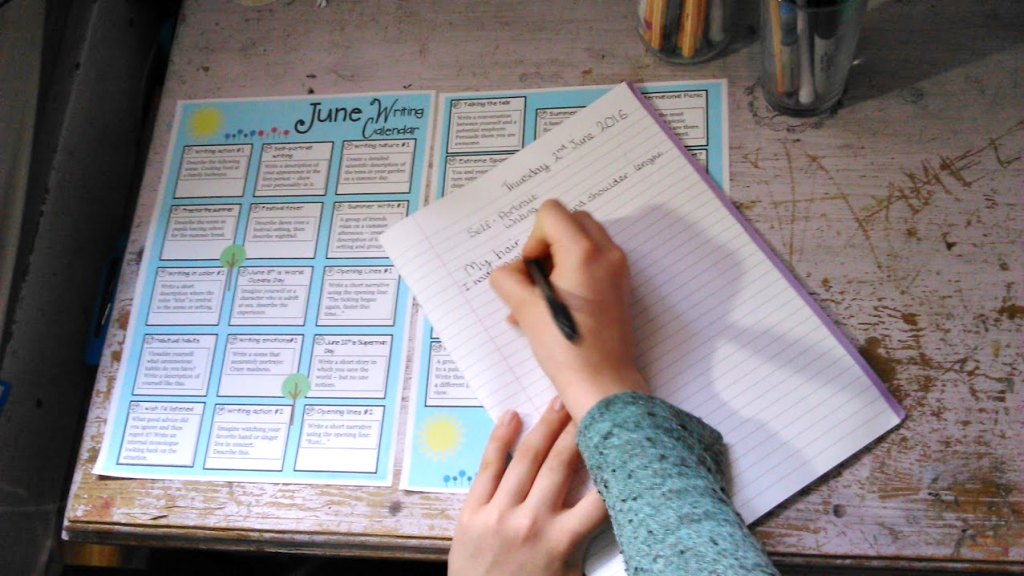
This might be my favourite tip. Whenever you read anything with your class – whether you are doing a writing unit or not – harvest vocabulary from the text. There are a couple of ways you can do this: 1) as you are reading together and come across a cool word, make a note of it; or 2) nominate a student or two to be in charge of writing down cool vocab as you are reading. Then I like to make a display of all of the words we’ve collected – this year we made this one. If you are curious about how I teach vocabulary in the classroom then check this out.
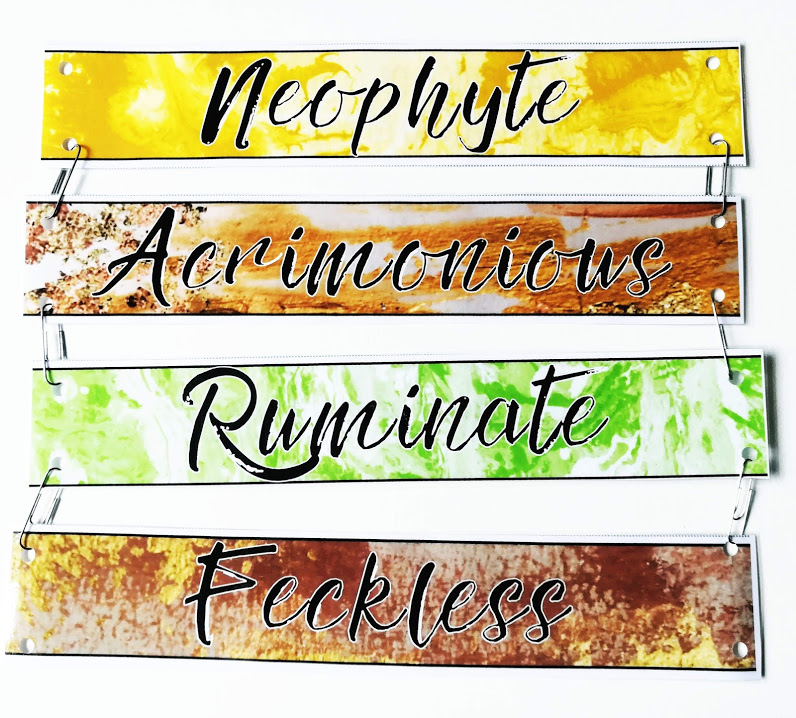
If you would like to hear more about teaching writing from me and would like to receive writing prompts and teaching ideas, please sign up for my weekly writing email below! If that wasn’t incentive enough – you will receive my FREE mini-guide for teaching descriptive writing!

*I send emails with teaching tips, tricks, and free resources to my subscribers regularly. I value your privacy and you can learn more about how I handle your data in our private policy. You can unsubscribe at any time.

Raymond Bradbury is reported to have said (among other things):

Over 20 years ago this advice was given to us – a gaggle of wet-behind-the-ears Creative Writing undergraduates. It seems rather contrived now: to carry about a notebook and chewed pencil end. But I do. The purpose then was to build fluency. Fluency in the practicality of writing, fluency in expression, voice, inspiration, and silence. “Building writers is like building a wall,” said one professor, “one sodding brick at a time.”
It would be gross exaggeration to say that I have followed Bradbury’s advice faithfully. But over the last 20 years I have filled some 15 notebooks and over a hundred pages online of writing.
When I was 20 years old, my writing voice was cynical, dark, and worrying. At 30 years old, the voice was hollow: falsely buoyant, darkly comic, restricted and curious. Now at 40, my writing voice is no more confident or certain, it is changing again. Bleak landscapes inhabited by warm-hearted individuals; pain moulded relationships living in richly symbolic environments. My writing has shifted in style too, sometimes daily it seems. Laboriously dense description. Then sparse. And every shade between.
Every time I sit down to write (honestly now perhaps 3 or 4 times a week) I start with anxiety. What shall I write about? How will I start? The waiting and the silence are hard task masters. Only with years have I realised these moments are also part of the process. So I feel great empathy for the students I teach who struggle with the ‘what’ and ‘how’ of writing.
Like so many things in English – we as teachers are often the jack-of-all-trades, and while I don’t necessarily want to use the word ‘master’, I must confess that even with over 20 years of writing, a degree and a Masters in it – I still don’t feel well qualified to teach it in the classroom.
Teaching writing means so many things…
Handwriting. Spelling. Grammar. Punctuation. Sentence openers. Techniques. Sentence length.
It is this multiplicity of outcomes that I think has inaccurately shifted the spotlight of emphasis onto the technicalities of writing, rather than the what of writing.
So this year, we have been giving students the opportunity to write more.
Here’s what it looks like:
A short exemplar of either narrative voice; setting; character; dialogue; action (etc). I rotate focus and style for variety’s sake.
This is the ‘read more’ bit of Bradbury’s advice. We have a huge collection of mini-exemplars available for any and every purpose.
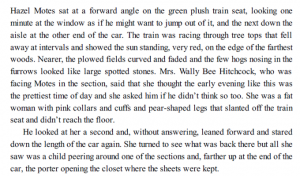
The above is the opening of Flannery O’Connor’s Wise Blood – we use this with nearly every year group.
A simple instruction that focuses on who the narrative voice is and what the content is:

At first we do two minutes, then 4, then 5. We alternate these depending on what else we are covering in a lesson. These writing moments are not designed to create polished writing. The purpose is to ask students to write often, write variety and to write freely.
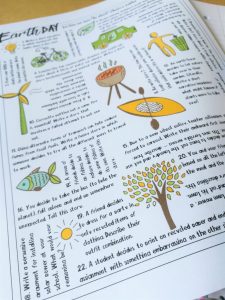
We do this daily (if possible) sometimes in class, sometimes at home. I have started generating Writing Calendars for students and colleagues who want to write every day. More, more, more writing is the point.
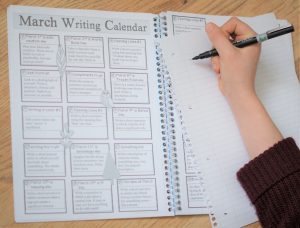
At the end of a particular session of writing (perhaps 3 lessons, perhaps 6) students then choose which piece they would like to develop. The word ‘develop’ here is significant for me. It would be very easy to use the word ‘improve’ but improvements often imply a prescriptive success criteria that requires students to write more like Dickens and less like Hemingway.
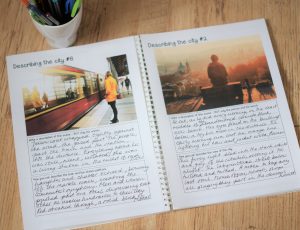
So we return again to narrative voice and style – who is this person telling this story? What is important to them? What do they need the reader to know, to feel, to think?
We ask:

* As a side note here, I tend not to encourage the use of poetic techniques in prose writing (alliteration, onomatopoeia etc). We teach personification (and pathetic fallacy) and extended metaphor.

If you are interested in the daily writing calendars they can be found on TPT here.
Each week I send out a creative writing - ready for you to use in your classroom. Sign up to receive these weekly emails and in addition I will send you tips, tricks, ideas, and offers!
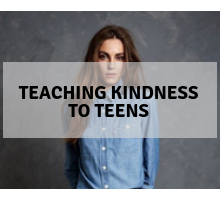
It feels like there has never been a more important time to bring kindness, resilience, bravery, and growth mindset into our classrooms. Over the last few months I’ve been working on ways that I bring kindness and character writing tasks into my ELA lessons.
The first way we looked at kindness worked really well with our reading work. We had been reading the novel Once by Morris Gleitzman (see my blog post on this awesome novel here!). In the novel (I won’t spoil it) the children who are trapped in Nazi-occupied Poland undertake beautiful acts of kindness for one another. We decided the display “Choose Kindness Every Single Time!”. Every student had a letter, inside the letter they had a writing prompt about acts of kindness.
Our identity poetry unit resulted in this summary of all the poetic voices we had studied. “Kind Heart, Fierce Mind, Brave Spirit!” I a-b-s-o-l-u-t-e-l-y loved this idea by my students. Again, each student decorated one letter for my classroom. I gave them a choice of 3 possible creative tasks – I want this particular class to have the option to draw images, instead of writing. And it worked really, really well!
Finally, with my youngest class (just 12 years old) we decided that we want to list all of the Growth Mindset characteristics they had demonstrated since starting secondary school. The move from primary education to secondary is huge and daunting. Students have to demonstrate huge adaptability, resilience, and cheerfulness to cope with it all. So now we are nearly at the end of year, we wanted to celebrate their achievements.
We came up with 32 different words to describe how awesome they had been this year and I turned them into a set of pennants to display around my classroom!
I hope you enjoyed these ideas!
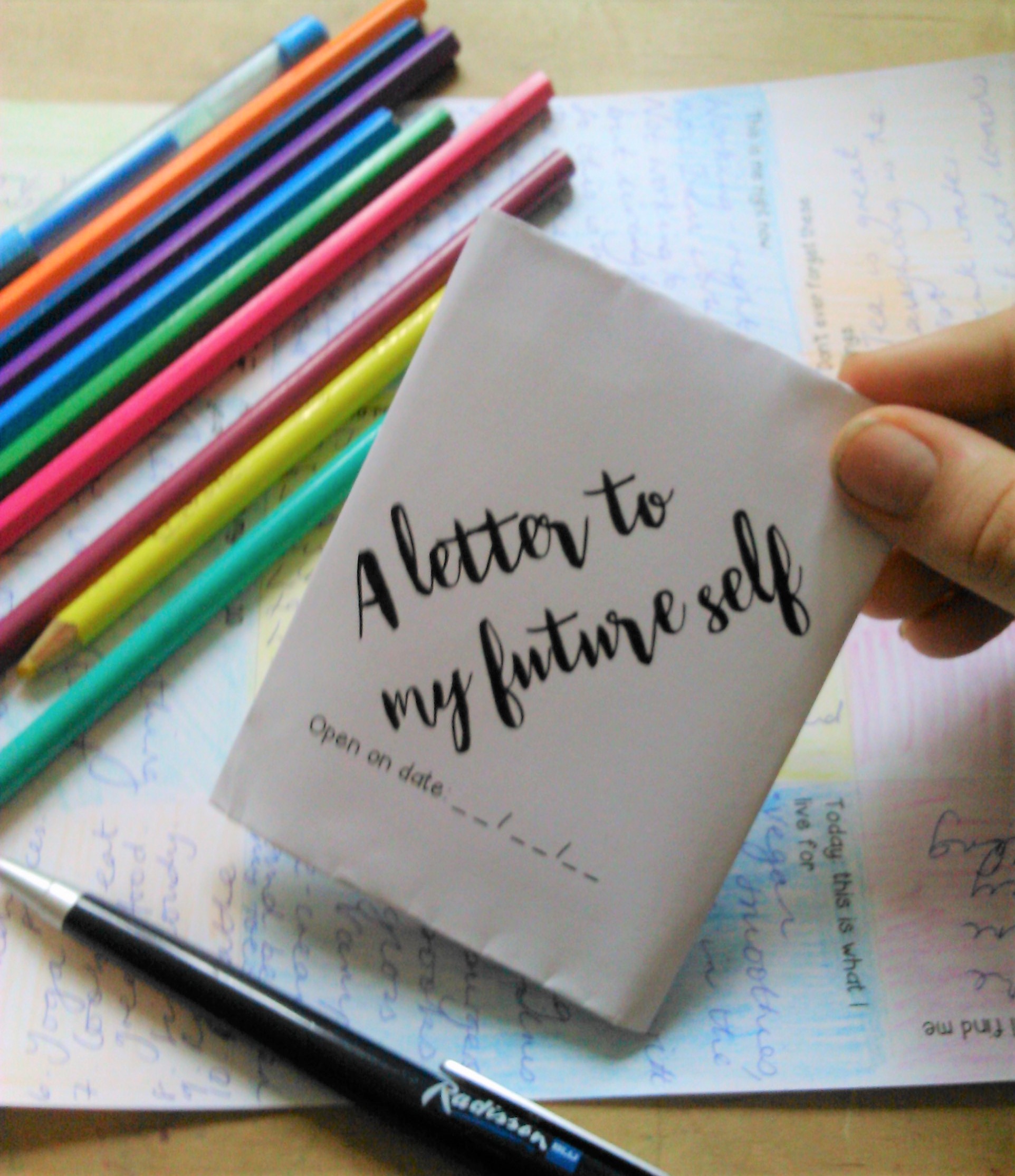
Sign up below to receive regular emails from me jammed packed with ELA teaching tips, tricks and free resources. Also access my free resource library!
The first few hours or days back at school are hectic. Timetables to give out, courses to enrol, books to organise. Annndd in my case – uniforms to check, planners to sign, and inevitability parents to call about incorrect shoes, hair, make-up, skirt length, nail varnish. We are busy: sorting out seating plans, handing out new books, sorting out target sheets and stickers, homework schedules, IEPs and TA resources.
Yup – back to school is hectic.
Added to this, most schools encourage a full-pelt return to hard learning. “What the learning question for your first lesson?”
Sometimes we just need a little bit of time.
For my new classes with older students – I like to gain 10 minutes or so with a few easy ‘get to know you’ activities.
Espresso Yourself – does that just that. Buys me 10 minutes to calm, followed by quality chat with the kids I have only just met. While I am muddling through the register and seating plan, they are telling me everything I need to know about them.

*I send emails with teaching tips, tricks, and free resources to my subscribers regularly. I value your privacy and you can learn more about how I handle your data in our private policy. You can unsubscribe at any time.

*I send emails with teaching tips, tricks, and free resources to my subscribers regularly. I value your privacy and you can learn more about how I handle your data in our private policy. You can unsubscribe at any time.
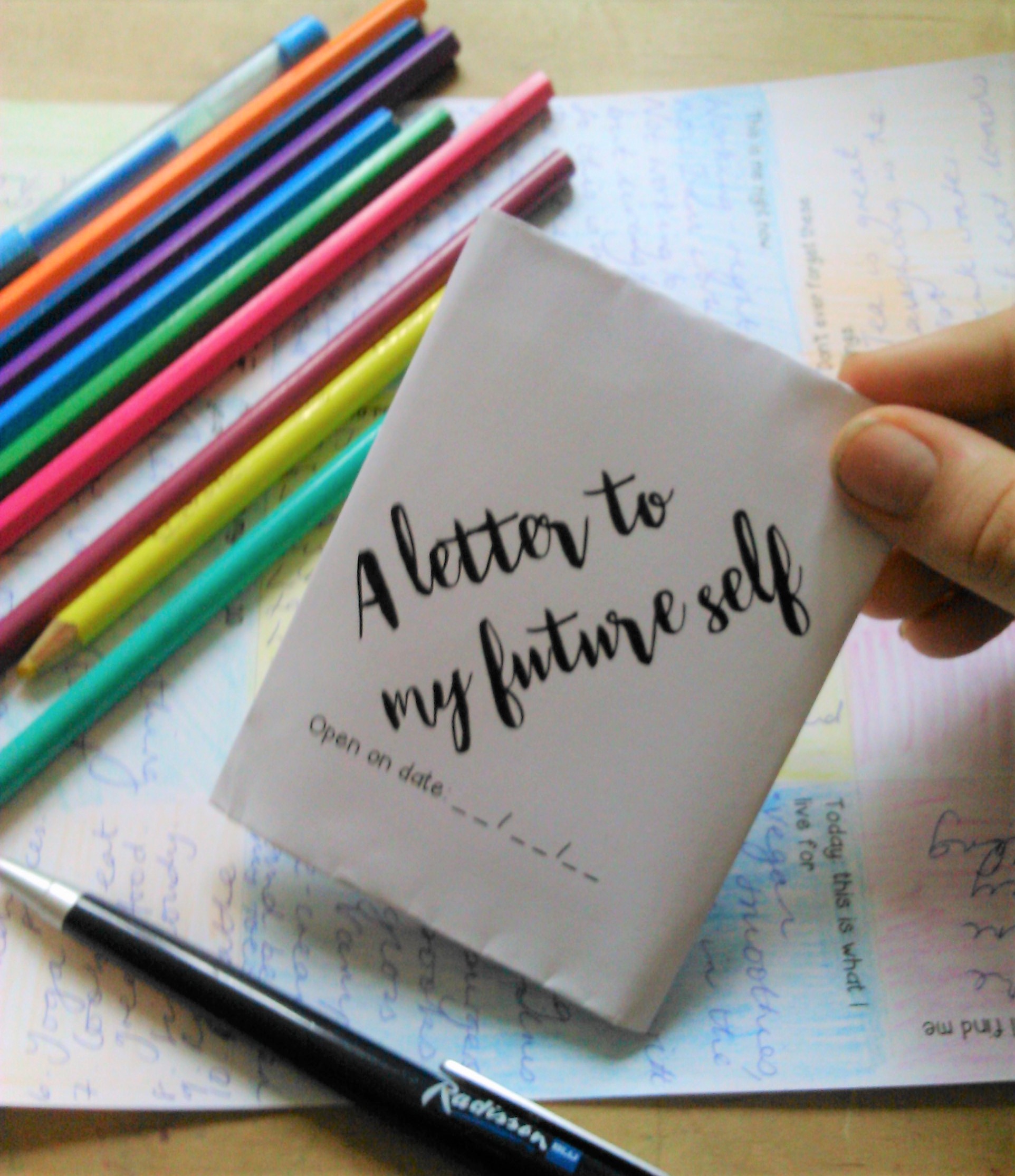
As the new school year approaches, I get a feeling – the same feeling I get every year – nervous and excited. I know that I will be meeting a bunch of new students: some I’ve never taught before, and some returning faces.
For each of these kids, I make a silent promise each September, that I will really see them. That I will take the time to get to know them. That they won’t fade into the background. That even though I will only see them 3 times a week (sometimes less) that they will be known in my classroom.
So I do all the usual stuff: learning names, memorising faces, greeting at the door.
Yet, it isn’t our classroom chat that helps me find out who these kids really are. It helps for sure. But there is something I do with my students that, every year, blows my mind without fail. It is to have them write me a letter. In fact to have them write me lots and lots of letters. A letter, a week for the first full term of school. That’s 13 letters, 13 chances for them to tell me the stuff that matters.
I love letter writing. It’s been ages since I’ve received anything more personal than a greetings card in the post. When I receive a letter, well, that’s something special. I like to tell kids about how when I left home, there were no mobile phones, no email or FB. I mean it was the 1990s, man! If we wanted to keep in contact with friends, who had moved to another part of the country, we had to write a letter. I moved to London. My best friend moved about 400 miles away to the Scottish borders. We would write to each other once a month – sometimes 10 sides of paper or more – I loved receiving those letters.
![]()
Letter writing, like diary writing, has been replaced by 140 characters or a fuzzy selfie. As letters are by their very nature personal – when we lose them, we risk losing a deep knowledge of human nature. Today we can watch fast-moving news events live. But what about the people involved a week later or a year later? Letters allow us time to reflect on our circumstances. If ever a species was in need of a pause button, it is humanity.
The first letter that my students write – is a letter to their future selves. Meh. You might say. Been there, done that. Well, this letter is something a little different. Perhaps because it isn’t a letter at all. I like to ease my students into the idea of writing me a few pages. It’s more a series of thoughts, or reflections, a collection of hopes and dreams.
We write this first letter in class. Students color in the different sections and then hilarity follows as I show them the complicated way to fold it up to make a ‘Renaissance folded letter’. I explain that paper and postage were very expensive in the 1600s-1700s. Envelopes would have been a huge waste. So people learned to write on every available space, except for the space with the address and the wax seal.
This moment has another purpose. We learn to laugh together. We learn to fail together. We become a team in this lesson.
After this first lesson, I set my students a letter-writing homework each week through September, October, November, and December. We have a few mini-sessions on the “Lost Art of Letter Writing” (start with a greeting etc) but other than that, this is one of the rare times my students get to do writing without overly structured input.
They do have a rubric, but I have to be hands-up-honest here and say, I don’t always mark their letters for grammar and spelling and stuff like that. I find myself thanking students for sharing something, more often than not I find myself asking questions, wanting to know more. At this point for me, these are more than marks on the grade sheet. And my kids need to know that.
There is no topic I won’t set, and depending on the age group of my class, we have covered them all. From ‘what is love’ to ‘my best day out’. From ‘is Britain a dystopia?’ to ‘is free speech really a good thing?’. Students know the letters that are set for them to think through a particular topic. To express their beliefs, opinions, and whatever muddle comes in between. Many times a student will start out with “I believe…” and by the end, they have found some different thoughts.
While I am being honest, I also what to tell you about the unexpected and awesome benefits of these letters. These were totally unplanned by me when I was developing this idea. First off, my students are more confident to express their ideas and opinions in my classroom. Yay! Less tumble-weed and more “I’m waiting for quiet!” but in an ELA classroom debate, discussion, and ideas are at the heart of what we do. Second, I discovered these kids are funny and clever and may does that give me hope for the future. (This one probably should have been first up). Last but by no way least, my students are better writers. And that’s my day job. These letters push them to think on topics they don’t really think about and they are improving in their writing and their expression for it.
So my advice – get your students writing letters. If you are interested in using this idea in your classroom. Click the image below.
Schools are wonderfully diverse communities. In fact, when I remember my ‘other’ job in the real world, I see what a bubble I existed in for such a long time. Working away, like a hamster on a wheel, with people doing jobs like me, who were pretty much, just like me.
I don’t have a choice who rocks up at my classroom door. Even teaching in a school with a very small catchment area, I see the full and wide range of human experience reflected in the kids I teach.
This year, more than any before, I have wanted to champion both diversity and community in my ELA classroom. To give space for challenge and difference and to enjoy togetherness and unity. An idea for this – linked to writing – segued from a unit we were already studying. In Year 7 / Grade 7 we analyze a series of poems from different cultures, if you never heard or seen them I would recommend the following: Blessing by Imtiaz Dharker and Night of the Scorpion by Nissim Ekeziel.
I wanted my students to have the opportunity to give voice to their culture, just as these poets had. But in teasing out these thoughts, I quickly realised that even within one class of 30 students, we had no fixed culture. Yes we live in the same town, but some of us speak different languages at home, eat different food, love different music. I needed to find a way to hold both our difference and our unity up for the world to admire.
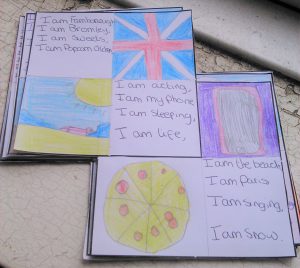
It could not have been any more simple in the end, the “I am” poem allowed my students to express both at once, in a muddle and a mix, just as it is.
Here’s what I asked students to do:
Once everyone had ideas in each box, we then discussed how to chose the ones that best represent ‘me’. I didn’t want to tell kids that ‘my iphone’ was wrong because that would have gone wholly against what I was aiming for – a celebration of them.
After the list generation phase, I would show the class my responses. Below is my original list (occasionally, now, I edit it and add sky diving or lion taming, just for fun).
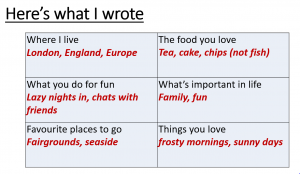
Then I model turning this list- in-a-box into a list poem. Firstly, we discuss nouns and articles and how in poetry missing them out can create meaning “I am tea and cake”, but occasionally they will be required because it just doesn’t sound right: “I am iPhone” becomes “my iPhone”. Again we discussed why “I am a sunny day” requires the article but “I am frosty mornings” doesn’t – looking at pluralisation and its impact.
Here’s my poem – which, yes, I show kids before they write their own one. I often ask students to consider what can be inferred from the various lines. My students tend to jump on “England and Europe” – I leave them to their speculations and then let them write their own.
I have no rules about the drafting and refining of these poems. I wanted a truthful expression. So after a lesson pottering about with words, we left the poems to ruminate for a while. Coming back to them the following day, allowed us one more opportunity to finesse and then we got creative.
I gave students this worksheet (click to download) and showed them the plan was to create a hanging squared poem to display.
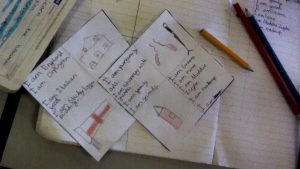
So they need to:
The result? A poem that shows the individual and yet celebrates the things that bring us together (cake, football, chicken) and the things that make us different (Russian, cheerleading champion, pro-golfer). I love it and I love them in all their samey-difference.
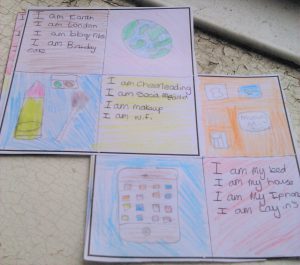
We laminate them and hang them around the room, sometimes stringing several together and leaving them to flutter in the breeze. Words and colour mixed together reminding us that diversity and community are beautiful.
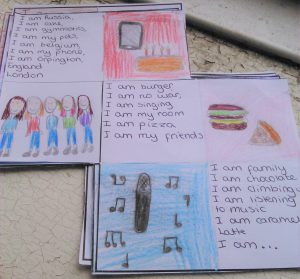 Sign up for my newsletter and receive regular updates, access to my free library and exclusive offers.
Sign up for my newsletter and receive regular updates, access to my free library and exclusive offers.

*I send emails with teaching tips, tricks, and free resources to my subscribers regularly. I value your privacy and you can learn more about how I handle your data in our private policy. You can unsubscribe at any time.
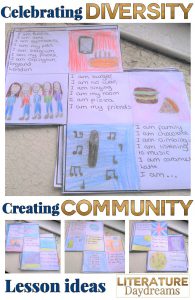

So February is just around the corner and for all my high schoolers that means Valentine’s. Now I don’t know about your students, but the kids I teach are not fans of the ubiquitous love hearts and flowers of romance. In fact Valentine’s horror would be much more up their street.
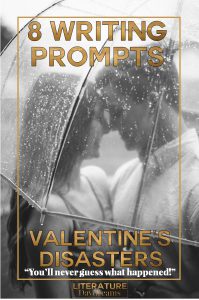
So this gives me a great opportunity to do some creative writing and them a chance to satisfy their natural desire for chaos.
Check out some ideas for Valentine’s disasters writing here.